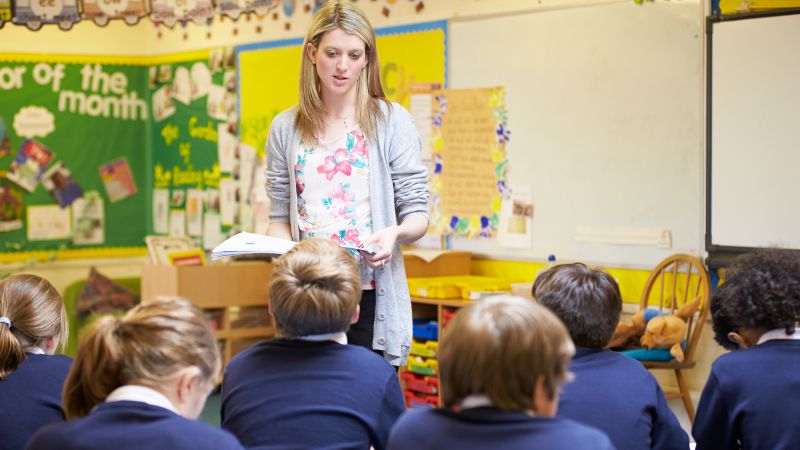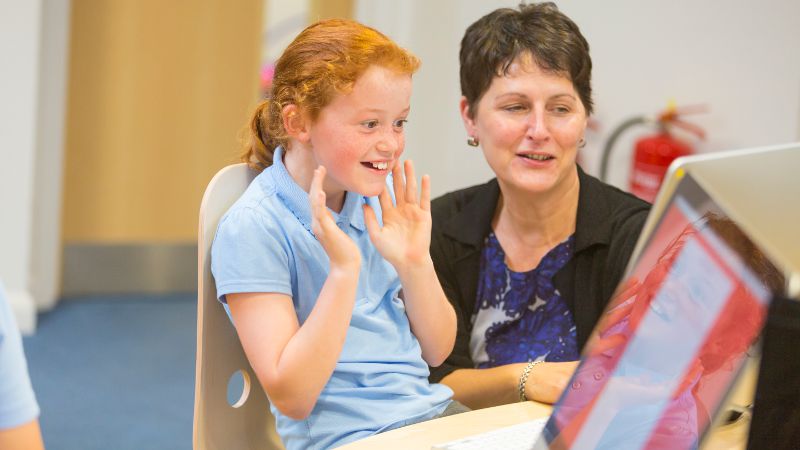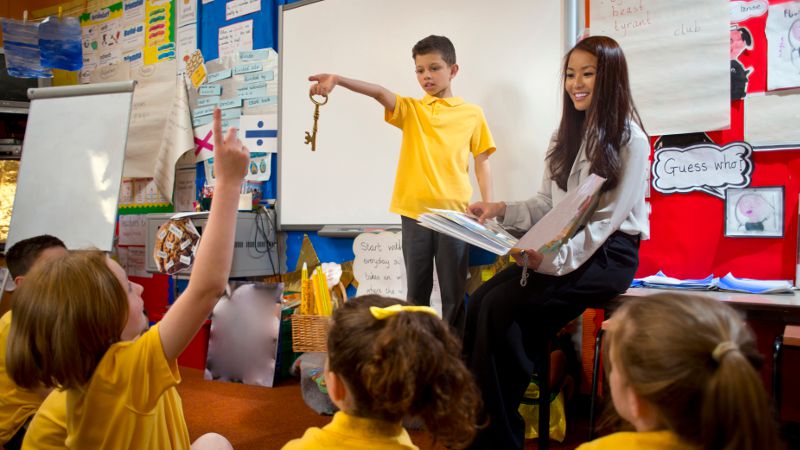
Traditional Teaching and Learning Strategies
What Actually Works? What Is It? Why Use It?
Traditional strategies – a range of strategies used by teachers in the past (some of which are no longer considered effective – some of which are used today in one way or another).

Traditional teaching strategies are a group of strategies that were used in the past that are now considered to be largely outdated. These strategies were the primary teaching methods employed in the early days of the modern education system (circa 1800 -1930s) when teachers were not required to undertake any form of teacher training. In fact, there was no real government interest or control over the education system in most countries until the last 100 years or so. Before that, parents paid the teacher if they thought the service was worth paying for. There were no classrooms or schools as we know them today and classes were held in churches, halls or outdoors.
Many of the strategies used in the past continue to be used in some way or another by teachers today.
Many of the teaching strategies used around this time involved highly repetitive (drill) tasks that emphasised memorisation (rote learning) while de-emphasising critical thinking, problem solving, metacognitive and social skills. Students spoke very little, the teacher spoke a lot, and behaviour management was often brutal by today’s standards.
Hint: while it is easy to shake our heads at what things were like in the past, bear in mind the context in which the education system was evolving. At the time, attending school was a luxury. It was only the Mines Act 1842 that banned women and boys under ten years old from working in coal mines in the UK. This wasn’t that long ago. Children as young as 5 and 6 worked in harrowing and dangerous conditions for 12 hours per day. Strangely, the Mines Act was passed just as much to uphold conservative Victorian-era beliefs about sexuality as it was to protect children from harm: girls worked topless in these mines which was considered highly improper and it made them potentially unmarriable. After public outcry, and once the upper echelons of the influential class learnt about these goings-on, the new laws were introduced not long afterwards.
However, there is another side to traditional teaching strategies that is often ignored and dismissed. Many of the strategies used in the past continue to be used in some way or another by teachers today. They have however been adapted to suit our current understanding and beliefs about what a quality education system looks like. For example, ‘look-cover-write-check’ is a modern version of rote learning how to spell words and to increase vocabulary. In the past, teachers had students write out words hundreds of times believing that method to be the best way to learn. Even if a student did happen to remember the unfamiliar word a few months later, it is unlikely that they would ever be able to use it correctly in any useful way outside of the classroom. These techniques can be thought of as experiments that paved the way for today’s best practice models of teaching.
The issue with rote learning is that students often don’t know how to use what they have learnt in a real context.
When people think about traditional teaching strategies, they often first think about drill and rote activities. A drill activity involves repeating something over and over in order to ‘get it right’ – usually something small and tedious such as a spelling word or a maths problem. Rote simply means to commit something to memory, usually by repetition. The issue with rote learning is that students often don’t know how to use what they have learnt in a real context. For example, students might rote learn a dozen or so spelling words. While they can spell these words initially – they struggle to use them when writing a sentence. Another issue with rote learning is that content is mostly stored in short-term memory – it isn’t until something is used in a real context that it gets committed to long-term memory. Therefore, rote and drill learning must be followed by other activities (practice activities, real world texts and multiple contexts).
Language teachers use drill and rote all the time. Students can only get better at pronouncing a word if they practise it a few times. Drill and rote are also common in phonics activities – repeating after the teacher for example. Students are often told to write out spelling mistakes 10 times. Important formulas or facts are memorised before an exam. Games, songs, revision and consolidation activities usually involve some form of drill and rote learning as well. However, while rote and drill activities persist today, they go by different names and have evolved tremendously from their predecessors. Strategies such as mnemonics, explicit teaching, direct instruction, spaced practice and purposeful practice share many elements with traditional rote and drill exercises.
We then come to the million-dollar question – should teachers use traditional or more modern methods in the classroom? High-performing teachers use a combination.
Another common feature of the traditional classroom is the teacher-centred approach. Modelling, presentations, shard learning and worked examples are all examples of teacher-centred activities. The antithesis to teacher-centred strategies are student-centred strategies which see the teacher facilitating more and ‘teaching’ less. Cooperative learning, discovery based learning and self-directed learning are well known examples of student-centred strategies.
In reality, the line between the 2 approaches is somewhat blurred and more philosophical than practical in many respects. Teachers combine aspects of multiple strategies. For example, worked examples usually involve a plethora of questions which encourage student participation and discussion. Discovery learning is also rarely 100% self-directed and teachers offer and provide regular support to students in more traditional ways (such as via shared and guided learning, scaffolding, chunking). In practice, high-performing teachers use a combination of teacher-centred and student-centred activities throughout most lessons. The question is not which type of strategy to use, but which strategy most likely allows students to meet today’s educational goals.
Hint: think traditional teaching methods such as modelling on the board or lecturing to students are no longer relevant? Think again! YouTube is educating a whole generation of learners (and many of those learners have rather negative views of the modern education system). In fact, a study showed that 51% of YouTube viewers were using the site to learn something.i At its core, YouTube is the quintessential example of a teacher-centred approach to learning – an expert has the floor 100% of the time and simply lectures the student on what they need to know.
A common criticism of traditional teaching strategies is that the curriculum is not differentiated (refer back to the differentiated instruction strategy outlined earlier in this book). This means that past teachers didn’t adjust the lesson or aspects of the lesson for students who were either struggling or advanced (either side of the bell curve). The lesson was aimed at the class as a whole and no allowances were made for individual abilities, understanding, background knowledge, interests, motivations, career aspirations, personality, learning styles or disabilities. Teachers today (including those who subscribe to more traditional methods) pay much more attention to the individual needs of learners, and in particular to those with disabilities and disorders.
We then come to the million-dollar question – should teachers use traditional or more modern methods in the classroom? High-performing teachers use a combination. For example, a teacher might present new information on the board using worked examples while asking students an array of questions. Students might participate in several drills to help them consolidate new information. The teacher may then schedule some individual work for a short period followed by a cooperative learning activity. The point is not to discriminate between different categories of teaching strategies and to blindly follow one or the other based on political or philosophical beliefs – best practice is to maximise the number of tools in your toolbelt and to strategically use each when the job demands it.
Over time, teachers develop their own teaching style in line with their idiosyncrasies, personality and the needs of their learners. This includes adapting and combining strategies: teacher-centred strategies can be made more student-centred and vice versa.
Foot notes:
- Smith, A., Toor, S., Kessel, P.V. (2018, November). Many Turn to YouTube for Children’s Content, Retrieved from https://www.pewresearch.org/internet/2018/11/07/many-turn-to-youtube-for-childrens-content-news-how-to-lessons/.























